

An industry leader
At SCS Engineers, you’re empowered to use your skill, experience, and energy to make a difference every day. As an employee-owned engineering consulting and contracting firm, we’re driven by a purpose to protect the air, water, and soil. We’ve been at the forefront of sustainable environmental solutions for more than 50 years.
Employee-owned
As an employee-owner, you help to make our business better and build wealth for your retirement. Through our Employee Stock Ownership Plan (ESOP), you’ll gain a financial stake in the business without investing your own money. When the business performs well, so does the value of your shares.
Supporting your career growth
Continual learning and innovation are fundamental to our business. We support skill development, license, and professional certification. There’s always room to grow when you’re ready to take your career to the next level.
Recognized for excellence
Our professionals are on the front line delivering engineering services for public and private sector customers. We’ve built deep bench strength, and the company is continually ranked nationally as a research and technology innovation leader.
Exceptional benefits
In addition to our collaborative culture and employee ownership, we offer outstanding benefits to support our employees’ well-being, financial health, and wellness. Our Student Debt Employer Contribution benefit helps pay off college loans faster.
SCS Engineers is an EOE/V/D Employer
Become one of the engineers, consultants, scientists, and technicians that help private and public entities run cleaner and more efficiently. A very rewarding place to have a career!
Sam’s contributions help the waste industry reduce environmental and health risks. His work improves the quality of life for workers in the industry and the communities surrounding our waste facilities.
Sam develops remote monitoring and control (RMC) SCADA systems that meet environmental management needs at landfills and industrial facilities. Operators can monitor and control their landfill equipment (e.g., flares, blowers, pumps, tanks, etc.) from anywhere using their phone or computer.
During COVID, he implemented RMC systems enabling operators to continue running essential services safely without physically traveling to the facility, and are especially valuable when facing labor shortages.
SCS is proud of our five candidates submitted for consideration this year. We’ve never submitted so many before; it’s a wonderful indicator of the talented professionals working at SCS, where company ownership spurs creativity and leaders. See our previous winners here.
In 2006, a Northeast Ohio landfill discovered a curious and concerning occurrence – temperatures rising inside the waste mound. In addition, the same development was found over the next several years at several more sites. At first, there was concern that the elevated temperatures were due to overdrawn gas extraction wells causing oxidation and fires in the waste. But soon, it was determined that the elevated temperatures were deep in the waste where anaerobic conditions with no atmospheric air intrusion, oxidation, or fire were possible, essentially debunking the landfill fire theory in those cases. These occurrences were a new anaerobic condition in the waste, beyond the typical methanogenic (or methane generating) reactions typically found in mature landfills.
Once it developed at similar sites, landfill experts began referring to the reaction status and affected landfill condition as an “elevated temperature landfill” or ETLF. Now, the industry identifies several common conditions in roughly 20 of them – some with gas and in-situ waste temperatures of 180 °F and higher (100 to 120 °F is normal).
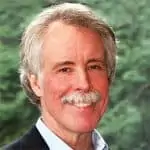
Knowns and unknowns,
Why every operator of a sizable landfill should look out for rising temperatures,
What to do should they see a problem, and
The focuses of current research as more sites are under watch.
“When we first started seeing elevated temperatures, everyone thought it was another fire, and though we have learned a lot in 15 years, it’s not always easy to distinguish between an ETLF and fire. But we do know that, often, overdrawn gas extraction wells that pull oxygen from the atmosphere into the waste mass can create landfill fires,” Walsh says.
“We’ve known for decades that air intrusion causing aerobic activity inside a landfill can create and fuel landfill fires. But many of my peers and I became convinced that a new type of anaerobic reaction was causing rising temperatures,” he says. They were leaning in this direction because they know that an indication a fire may ensue or exist is if there’s more than 5% oxygen or 20% nitrogen in the gas drawn into a landfill gas extraction well. But in ETLF’s we did not see any evidence of elevated oxygen or nitrogen. Something else was happening, causing the sites to heat up to 180 degrees F or more.
The team delved into operators’ landfill databases, discovering three trends at least six months and sometimes years before temperatures rise:
Gas composition, which is typically 50% methane (CH4) and 50% carbon dioxide (CO2), began to change. The CH4 level drops, replaced mostly by CO2.
They learned that the pH of leachate moves from slightly alkaline to acidic (dropping to 6 and lower). The third condition they found is that hydrogen creeps up to between 1% and 15% of the landfill gas composition.
“But you have to look analytically at all the puzzle pieces. Rising CO2 and dropping CH4 can signify either a landfill fire or ETLF. Suppose you have this change in gas composition coupled with elevating hydrogen levels of 5% to 15% or more, lowering pH levels, elevated temperatures of 180 degrees, and the absence of smoke or steam. In that case, you likely have an ETLF,” Walsh advises.
The underlying cause and conditions driving an ETLF are still not well understood. Accurately assessing, quantifying, and modeling thousands of different reactions in landfills and the heterogeneity of the in-situ waste has made it difficult.
Even harder than understanding ETLF reactions and predicting the conditions that drive them is knowing how to prevent an ETLF, extinguish it once it develops, or stop it from expanding.
What could be the root cause?
The first known site in Ohio received a lot of aluminum production waste (APW) — mostly production residuals and air pollution dust removed by air pollution devices. That seemed to be the root cause of that ETLF condition at that landfill, and the hope was that ETLFs might be limited to landfills that receive APW. But in the years immediately thereafter, ETLFs developed at two other sites – one in Southwest Ohio in 2009 and another in Missouri in 2011. Those two sites had no known APW and no known material quantities of other special waste that might trigger their ETLF conditions.
Look to deep, wet landfills.
“We looked through waste receipts carefully and couldn’t put a finger on a specific special waste material as a cause. But we did learn that there’s more potential for ETLFs to develop in deep, wet landfills,” Walsh says.
The problem is that practically every site east of the Mississippi is wet, and most landfills active today are both deep and large – deeper and larger than the average landfill of the past.
“So, I think that almost every active municipal solid waste (MSW) landfill has to look at the gas and leachate data very carefully to determine if they have a developing elevated temperature landfill,” he says. That’s not to suggest that a majority of such landfills become ETLF’s. In fact, ETLF’s are rare and in the minority of all landfills today. It’s just that there may be some risk of ETLF conditions developing at such sites, and it’s worth keeping an eye on those characteristic conditions over time.
It is especially challenging for the industry to know what to do once they confirm an ETLF is developing.
There’s been a lot of discussion on how to stop the reaction. Several aggressive technologies, including very cold CO2 and nitrogen (N2) injection into the waste to cool it and hopefully extinguish, or at least stop the growth of an ETLF reaction, have been done at a few sites. But applying these cold gases homogeneously throughout the targeted waste volume is quite challenging, if not impossible, so that some aggravating conditions will likely continue and may go on to spread further.
“The usual best and most effective course is to monitor, contain, and manage elevated temperatures carefully. We’ve found that as our best recourse,” Walsh says.
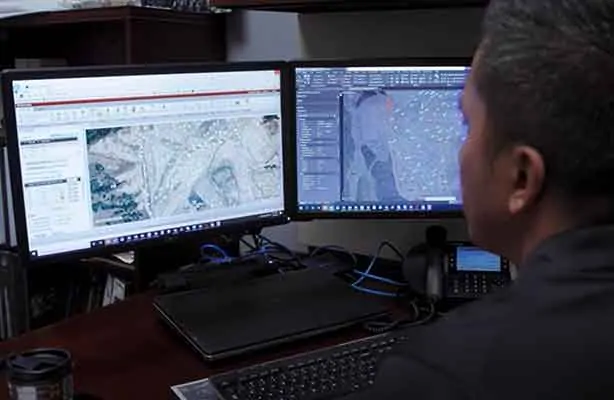
Your gas extraction system is key.
While operators should throttle down or shut off gas extraction selected wells in affected areas with landfill fires, with an ETLF, it’s critical to continue drawing gas at the rate it’s generated to mitigate the buildup of heat and pressure in the waste mass.
Rather than use plastic pipes, operators may need to use temperature-resistant gas well materials that won’t melt or otherwise fail. And they must consider that with added stress on the gas collection system, wells can fill with liquid.
So, Walsh advises, drain gas wells of liquids promptly and as completely as possible. Doing so removes heat buildup in the liquids and opens up more of the gas well column to extract higher gas volumes and lower gas pressures in-situ in the landfill. Adding additional wells between existing locations can also facilitate the extraction of more gas and liquid to reduce further gas pressure and heat that is otherwise trapped and held in the waste.
Maintaining secure, tight landfill covers is equally important, as elevated temperatures can lead to rapid settlement, with resulting cracks and fissures in the cover, allowing fugitive gas emissions.
The elevated heat levels accelerate waste decomposition, reducing in-situ waste volumes and, with that, causing rapid differential settlement at the surface. Such rapid settlement amplifies stress on landfill infrastructure and can cause cracks and fissures and ultimately fugitive emissions and odors. Some operators find the best approach is to move to a very airtight surface cover such as an exposed geomembrane cover (EGC) to contain emissions, preventing gas from venting between extraction wells. These covers have the added benefit of enhancing gas collection volumes.
Leachate collection infrastructure should not be affected, at least if it’s at the bottom of the landfill.
The reaction is typically at the center, vertically, and does not travel to the bottom of a landfill. However, ETLFs can generate significantly more liquids, both leachate and condensate. And contaminant levels in these liquids may be higher, creating challenges in treatment and disposal, Walsh advises.
Consequently, some of the few operators battling elevated temperatures, with larger volumes and harder-to-treat liquids, may lose access to their local wastewater treatment plants and be forced to go elsewhere, hauling hundreds of miles in some cases. Leachate hauling and treatment costs may be significantly higher.
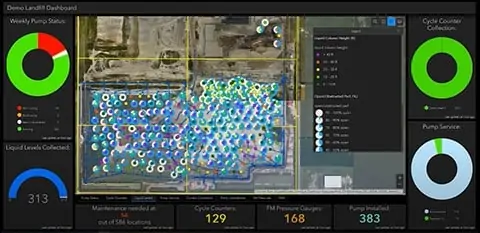
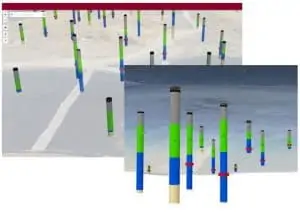
Research is ongoing, with The Environmental Research Education Foundation (EREF) at the forefront.
One goal of landfill engineers and scientists is to figure out the underlying causation and reaction, which has proven a big challenge due mainly to the thousands of reactions and heterogeneity of waste that Walsh discussed earlier.
EREF studies have models to try and determine if a landfill has a high potential for ETLF conditions to develop. Still, it’s been difficult to model the likelihood an ETLF condition will develop with any degree of certainty so far. Special wastes may be a factor, including aluminum production waste (as previously mentioned). Ash and biosolids may also be issues when receiving them at a landfill in significant quantities relative to conventional MSW.
An ongoing focus of EREF studies is now looking at how to place special wastes within the landfill in a manner that ETLF conditions are less likely to develop. That includes allowable quantities of such special waste relative to total waste volumes and how such special wastes are mixed with the general waste stream received, and in turn, how they are positioned within the landfill geometry. In many cases, it may be advisable to isolate such special wastes in monocells, separate from and well isolated from the general waste stream.
Monitor, then contain and manage.
“We’ve learned a lot about ETLFs over time. But while we know some special wastes that release heat seem to have higher potential, I don’t think we will be able to nail down precisely what triggers the reaction. Or, exactly precisely what landfill with what conditions will become elevated temperature landfills,” Walsh says.
“We have to watch precursors and developing conditions to see if the trend is to move along that continuum of elevated landfill temperature and other indicators like gas composition and leachate pH. Then your best recourse, again, is to preemptively and aggressively contain and manage.”
Additional Reading and Resources:
Prevent, Identify, and Mitigate ETLF Conditions
ETLF Conditions – Best Management Practices
Videos:
Monitoring Tools: SCS DataServices and SCS RMC
Questions and Comments: Contact us at
The Fabricated Geomembrane Institute – FGI, discusses allowable leakage rates for industry. We strive for zero leakage and it is possible – this mix of regulators and practitioners including Neil Nowak of SCS Engineers discuss how to achieve it.
Click here to start the video.
The promulgation of 40 CFR 62 Subpart OOO (EG plan), effective since June 21, 2021, impacted all MSW landfills operated under NSPS subpart WWW. One of the major changes of this rule is the requirement to monitor all cover penetrations during quarterly methane surface emission monitoring (SEM). All components that are part of the landfill gas collection system and any other object that completely passes through the landfill cover are considered cover penetrations.
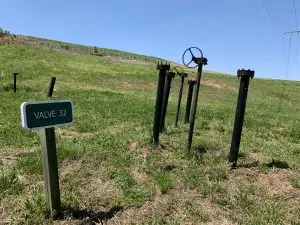
As landfill and landfill gas practitioners, we suggest that advanced planning can save you time and effort. As landfills face short 10-day correction periods, coupled with supply chain and labor shortages, planning can make operations and compliance more efficient. We present a few scenarios and suggestions here.
You’ll need to record any reading greater than 500 ppm above background as an exceedance location during monitoring. These require taking corrective actions such as cover maintenance or landfill gas wellfield adjustments, along with monitoring the exceedant locations again within 10-days of your initial monitoring. If 10-day monitoring still shows methane concentrations greater than 500 ppm, you’ll need additional corrective actions and to monitor the location once more within 10-days of the second exceedance.
Once the location(s) shows methane concentrations less than 500 ppm, it is mandatory to monitor these locations again one month from the very first reading showing the exceedance. If a location shows methane concentration greater than 500 ppm for three occasions in one quarter, the addition of a collection device, other improvements to the collection system, or a request for an alternative remedy and timeline is required. Therefore, implementing appropriate corrective action within the specified timeframe is critical to avoid expensive GCCS expansions or NOVs.
Gas well, well boots, leachate risers, below and above-grade pipe transition, condensate sumps, and valve vaults are some of the common exceedant penetration locations. Implementing corrective action at these penetrations within the given timeframe is a challenging ordeal for landfill operators. Corrective action can vary depending upon several factors: the methane concentration observed during initial monitoring, the location of the penetration, cover type (geomembrane capped vs. soil capped), material availability, and resources available to perform the work.
Corrective actions have varying material and effort requirements; one solution cannot fit all challenges. The most common corrective actions include applying expanding foam, soil mounding, excavation, clean dirt fill or bentonite fill, well boot repairs, installing a prefabricated well boot seal, and installing a vacuum line for emission control. We recommend before starting your monitoring operators consider the following factors:
Develop an educated estimate for the number of expected exceedant penetrations from the landfill sections that historically show cover exceedances or are in areas with problematic operating conditions. Using the readings and data collected over time makes identifying these areas much easier.
Decide the type of corrective action to implement based on your cover type in those expected exceedance locations.
Procure corrective action materials such as bentonite, geomembrane for boot fabrication matching permitted cap material, or prefabricated seals before you need them.
Check the availability of contractors for liner or well boot repairs, and their response time, before you need them.
Surface emissions vary based on the operating conditions; therefore, it is common to see a variable number of exceedances from one quarterly monitoring event to the next. At one of our sites that had no surface exceedances observed during the previous quarterly SEM event, multiple penetrations observed methane concentration greater than 500 ppm during the following quarterly event. One section of the landfill with a soil cap observed methane concentrations up to 16,000 ppm. The geomembrane capped section observed penetration concentrations of up to 8,000 ppm methane. We implemented various corrective actions to bring these exceedant locations to compliance.
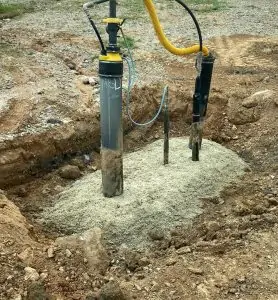
In the soil-capped section, we implemented bentonite plugs, prefabricated seals, and site fabricated geomembrane seals depending upon the observed methane concentration, exceedant location, and material availability. Pre-planning and procuring material ahead of time proved to be very helpful.
For each of these corrective actions, we opened an area about 2-ft deep and 10-ft x 10-ft. For bentonite corrective action, about a 9-inch thick bentonite slurry was filled, extending about 5-ft on each side of penetration and then filled with clean dirt.
Prefabricated seals that come in standard sizes as a slip-on for penetrations and site-fabricated geomembrane seals also covered at least a 5-ft x 5-ft area around each penetration. The sleeves at each penetration were left at least 6-inch over the ground surface after filling the excavated section with clean dirt.
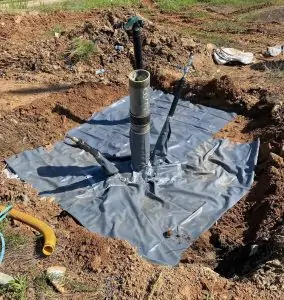
In the geomembrane-capped section, we choose to use well boot repairs using geomembrane. Our task was to identify the type of geomembrane used in the cap, procure the geomembrane, identify and schedule the contractor, and install well boots in each exceeding penetration location within the 10-day timeframe. After the well boot fabrication and installation, we needed to carefully reconnect the existing drainage layer.
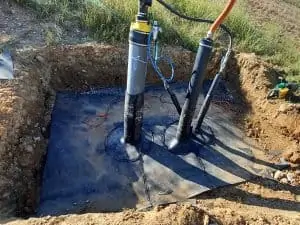
Implementing these corrective actions can get expensive; prefabricated seals can cost up to $300 per penetration, excluding installation. Material and contractor’s availabilities are also a significant challenge. While implementing these corrective actions, additional unforeseen challenges can arise as well. Planning ahead and having the material on site is very important for landfill operators to keep the landfill under compliance.
About the Authors:
Shrawan Singh, Ph.D., PE, is a Senior Project Professional. Stephen Descher is a Senior Project Professional. You can reach both at SCS Engineers.
If you thrive in a friendly, collaborative, and client-focused company, SCS Engineers is the place for you. We’re looking for field technicians to work collaboratively on our Field Services teams nationwide. Use our job search to find your desired location. Specific information is posted for each open position.
Under general supervision, our technicians operate, monitor, and maintain gas migration control and recovery systems, including gas well monitoring and adjustment, troubleshooting, and system repairs. Be part of a team working for the good of our clients, communities, and the environment.
Charles Hostetler, Ph.D., and Kacey Garber join the award-winning SCS Engineers practice serving the region.
As more businesses and municipalities move toward sustainable practices to help protect natural resources, the environmental consulting and contracting firm SCS Engineers is experiencing exponential growth. Most recently, SCS welcomes two professional staff in Peoria, Illinois, with impressive groundwater and wetlands protection backgrounds.
Landfills are required to monitor the underlying groundwater for contamination during their active life and post-closure care period. They operate using modern engineering methods, liquids management systems, and technologies that meet or exceed state and federal compliance. Landfill development may impact existing wetlands or navigable waters of the United States; developing new water resources mitigates or offsets those impacts.
Dr. Charles Hostetler has over two decades of experience as a hydrogeologist planning and overseeing groundwater and wetlands protection programs. His field experience helps solid waste facilities site and run operations safely while proactively monitoring and protecting groundwater and wetland resources. His diverse experience includes developing conceptual designs for the treatment of PFAS in liquid waste streams and sequestration in landfills. You can learn more about Charles Hostetler here.
Ms. Kacey Garber comes to SCS as an experienced hydrogeologist specializing in solid waste management permitting and groundwater monitoring well design and construction projects. Her areas of expertise include groundwater and wetlands monitoring, environmental sampling, hydrogeological site characterizations, groundwater monitoring well design, monitoring well installation oversight, and designing special groundwater studies. You can learn more about Kacey Garber here.
SCS Engineers Business Unit Director Eric Nelson says,
Charles Hostetler, Ph.D., and Kacey Garber bring their landfill permitting and groundwater management expertise to our environmental practice in Illinois. Charles and Kacey share their expertise on the emerging PFAS regulations applied to landfills with our industry at SWANA and NWRA conferences. Garber brings hard-rock geology and groundwater expertise. Her project leadership has been instrumental in removing a Part 807 facility from Post-Closure Care requirements. Hostetler has the distinction of having removed the only Part 811 facility from a Post-Closure Case.
…and your new colleagues say WELCOME TO SCS!
“The Infrastructure Investment and Jobs Act, signed into law last month, will dedicate more than $1.5 billion to the U.S. EPA Brownfields program. The Act includes hundreds of millions of dollars allocated to Multipurpose Grants, Assessment Grants, Cleanup Grants, Revolving Loan Fund Grants, and technical assistance intended to improve equity, create jobs, and mitigate environmental degradation.”
CCLR has provided the expected breakdown and timelines from EPA. The EPA has hundreds of millions of dollars allocated for FY22 that will be applied for in July and awarded in November 2022. This timeline is different and with much larger individual grants possible, up to $10mil per grant.
SCS Engineers has a stellar win rate for brownfields grant writing and implementing brownfields programs. Please let our brownfields and remediation experts know if you have any questions or if we can provide assistance in grant support.
Click here to learn more and obtain support and funding for your community’s brownfields project.
These days you see companies bending over backward to attract new hires. Puffy job descriptions, promises of success, big salaries, and benefits are everywhere. My advice is to learn about a company’s leaders — not yet retiring and not a young professional. What they talk about during interviews is often a good indication of what they are like and what they value. It has always helped guide me to work somewhere rewarding under the tutelage of remarkable people.
Mike McLaughlin is the Senior Vice President of Environmental Services for SCS Engineers and was once an SCS young professional. He graduated from law school in 1979 and continues to influence people and businesses every day, including many at SCS Engineers.
He is an environmental engineer with a law degree, and you’d be hard-pressed to find a more knowledgeable person in the field. You’d also be lucky to know him. He is as entertaining as thoughtful about finding practical solutions to environmental challenges and the things that matter.
Just reading the article A Special Place to Study Law makes me happy knowing I get to work with people like Mike, and you could too.
With great pleasure, we announce the American Academy of Environmental Engineers Certification Board granted Som Kundral certification in the specialty of Hazardous Waste Management and Site Remediation this month. Board Certified Environmental Engineers (BCEE) such as Kundral make up the top four percent of environmental engineering experts.
Kundral and his work are well established and recognized across the nation. As a rising star and SCS Engineers’ Young Professional, Kundral’s teamwork is not only recognized by his clients but by the American Council of Engineering Companies and the Environmental Business Journal with a Business Achievement Award for Groundwater and Stormwater Remediation Solution. Kundral is also a Waste360 40 Under 40 award recipient.
Well done, Som! We’re so proud of you and all of our SCS Young Professionals helping our clients build a better world.